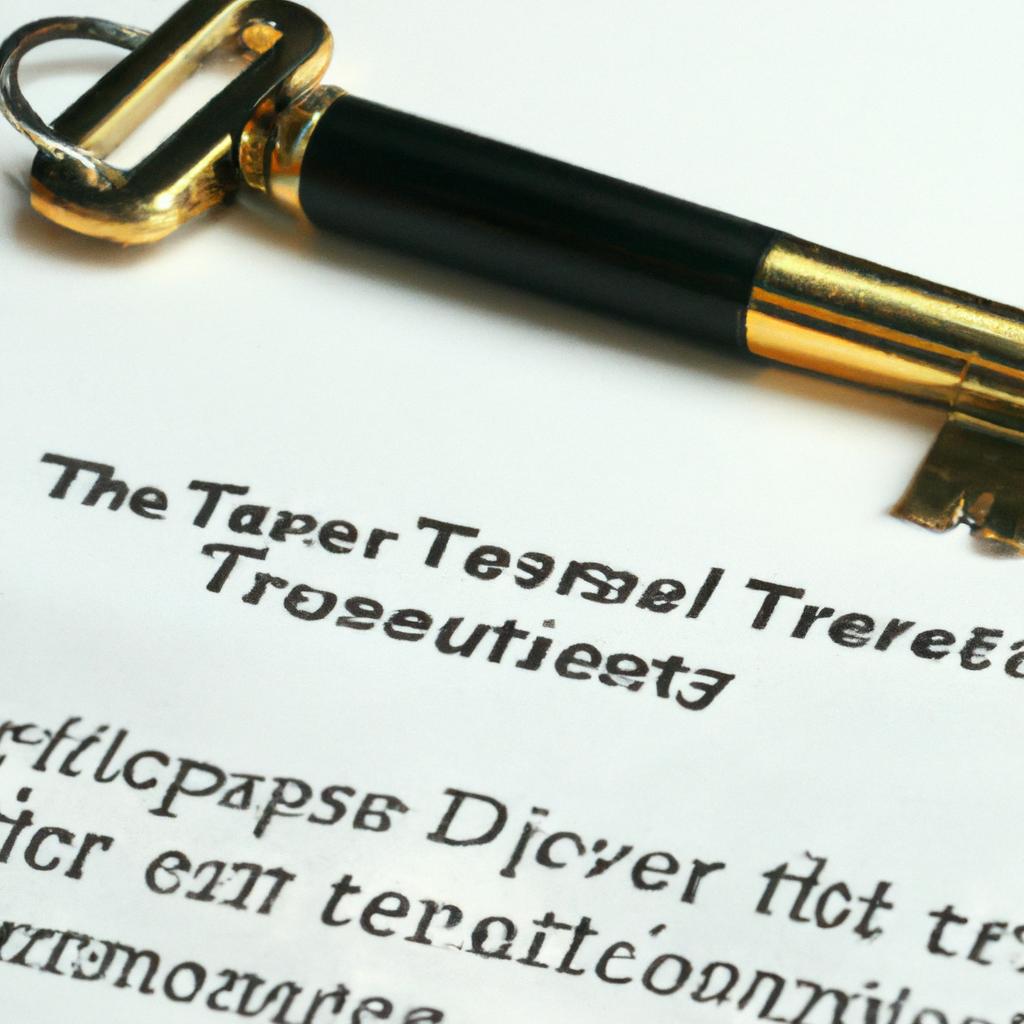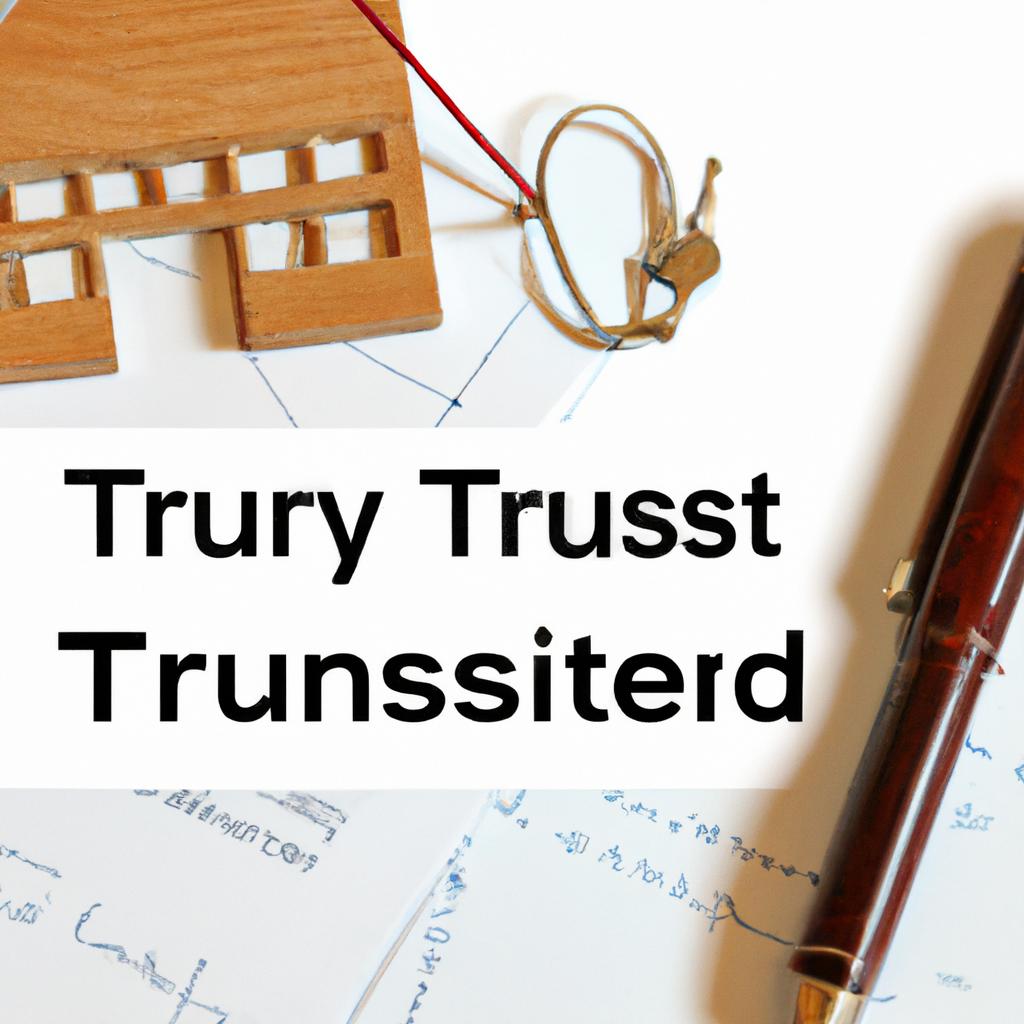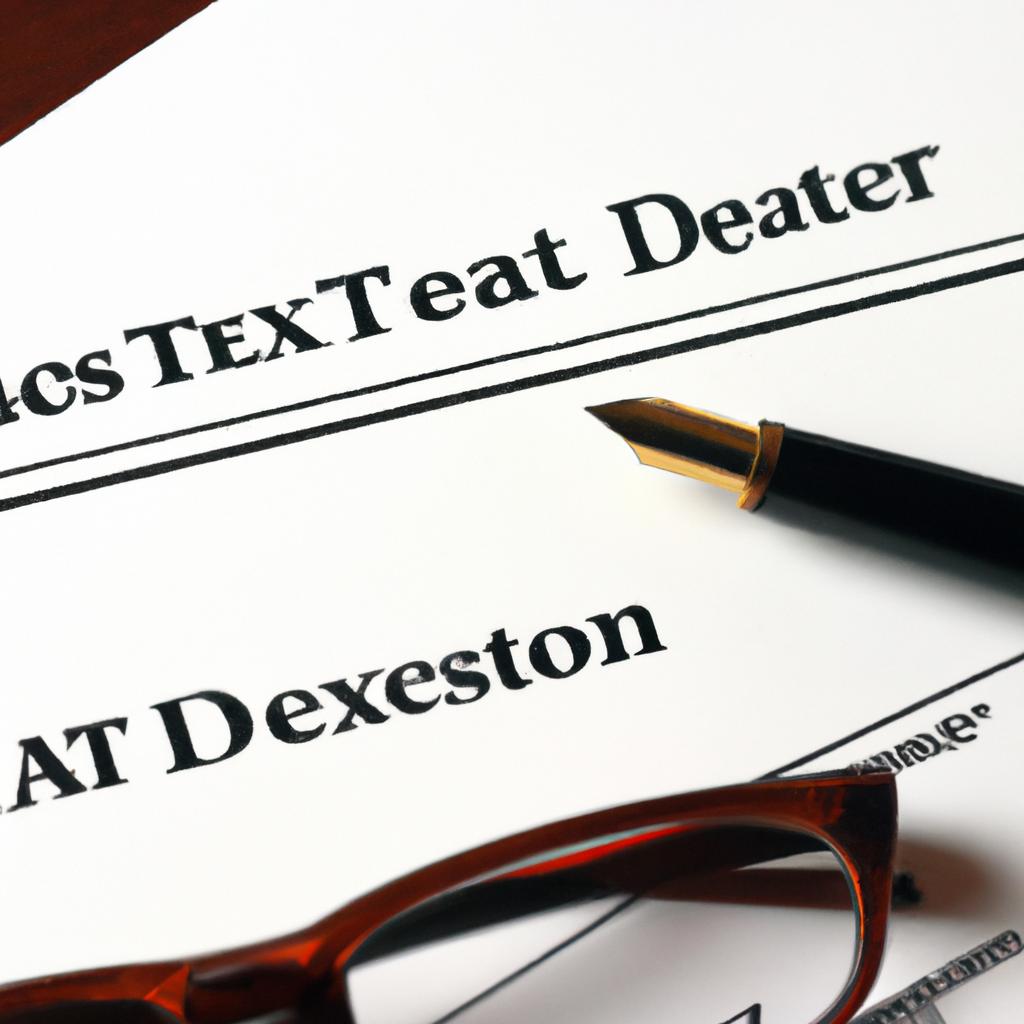In the realm of property law, the transfer of property through a deed is a vital mechanism that ensures the proper conveyance of ownership rights. As experienced practitioners in estate planning and probate, the Morgan Legal Group in New York City is well-versed in the intricacies of deed transfers. From drafting meticulous documents to navigating the complexities of real estate transactions, our team stands ready to assist clients in safeguarding their property interests. In this article, we delve into the nuances of deeds and the essential considerations involved in transferring property rights.
Understanding the Legal Framework of Deeds in Property Transfer
When it comes to transferring property, understanding the legal framework of deeds is crucial. Deeds serve as the legal document that transfers ownership of real property from one party to another. There are different types of deeds that can be used in property transfers, each with its own requirements and implications.
One important aspect to consider when transferring property through a deed is ensuring that the deed is properly executed and recorded. This involves following the specific requirements set forth by state law. Additionally, it is essential to clearly define the rights and responsibilities of each party involved in the transfer to avoid any potential disputes in the future. Seek legal advice from professionals at Morgan Legal Group to ensure a smooth and legally sound property transfer process.

Key Considerations in Drafting and Executing a Deed for Property Transfer
are crucial in ensuring a smooth and seamless transfer of ownership. One important factor to keep in mind is the accuracy and clarity of the information provided in the deed. It is imperative to double-check all details, such as the legal description of the property, the names of the parties involved, and any specific terms or conditions of the transfer. Any errors or discrepancies in the deed can lead to delays or legal complications down the line.
Another key consideration is understanding the specific requirements and regulations that govern property transfers in the relevant jurisdiction. Each state may have its own set of rules and procedures for transferring property, so it is essential to research and follow these guidelines closely. Additionally, consulting with a legal professional specializing in real estate law can help ensure that all necessary steps are taken to properly draft and execute the deed for a property transfer. By paying attention to these key considerations, individuals can help facilitate a successful and legally sound transfer of property ownership.
| Name | Experience | Location |
|---|---|---|
| John Smith | 10 years | New York City |
| Jane Doe | 5 years | New York City |

Utilizing Trusts as a Strategic Tool in Property Transfer
When it comes to transferring property, utilizing trusts can be a strategic tool that offers a range of benefits. Trusts provide a way to transfer assets while avoiding probate, ensuring privacy, and allowing for greater control over how the property is managed and distributed. By establishing a trust, individuals can protect their assets from creditors, minimize estate taxes, and provide for loved ones in a flexible and efficient manner.
There are various types of trusts that can be used in property transfer, each with its own set of advantages and considerations. From revocable living trusts that allow for flexibility and control during the grantor’s lifetime to irrevocable trusts that provide asset protection and tax benefits, there are options to suit different needs and objectives. By working with an experienced estate planning attorney, individuals can create a comprehensive strategy that leverages trusts to achieve their goals for property transfer.

Navigating Tax Implications Associated with Deed Transfers in Estate Planning
When it comes to , it is crucial to understand the complex legal and financial considerations involved. Deed transfers involve the transfer of property ownership from one party to another, and it is essential to ensure that all necessary legal requirements are met to avoid any potential tax consequences.
One important consideration when transferring a deed in estate planning is the potential impact on property taxes. Depending on the specific circumstances of the transfer, there may be exemptions or exclusions available that can help minimize the tax burden. It is advisable to consult with an experienced estate planning attorney to ensure that the deed transfer is structured in a way that maximizes tax benefits and minimizes potential liabilities.
Q&A
Q: What is a deed to transfer property?
A: A deed to transfer property is a legal document used to transfer ownership of real estate from one party to another.
Q: What information is included in a deed to transfer property?
A: A deed typically includes the names of the current owner and the new owner, a legal description of the property, and signatures from all parties involved in the transfer.
Q: How is a deed to transfer property different from a title?
A: While a deed is a legal document that transfers ownership of property, a title is a legal concept that represents ownership rights. The deed is used to transfer the title from one party to another.
Q: Do I need a lawyer to create a deed to transfer property?
A: While it is not a legal requirement to have a lawyer create a deed, it is highly recommended to ensure that the document is legally valid and contains all necessary information.
Q: How do I record a deed to transfer property?
A: In order to officially transfer ownership of property, the deed must be recorded with the appropriate government office, typically the county recorder’s office. This process is known as “recording the deed.”
Q: What are some common types of deeds used to transfer property?
A: Some common types of deeds include warranty deeds, quitclaim deeds, and special warranty deeds, each with its own specific purpose and legal implications.
Final Thoughts
In conclusion, understanding the process of transferring a deed to property is essential for anyone looking to buy or sell real estate. Whether you are a first-time homebuyer or a seasoned investor, having a clear understanding of the steps involved can help streamline the process and ensure a smooth transaction. By taking the time to familiarize yourself with the intricacies of property deeds and seeking guidance from professionals, you can navigate the world of real estate with confidence and peace of mind. So, don’t hesitate to take the necessary steps to secure the deed to your dream property and embark on a new chapter in your real estate journey.
 You can use the following outline, but feel free to rearrange or add additional sections as needed:
You can use the following outline, but feel free to rearrange or add additional sections as needed:
Introduction:
When it comes to buying or selling a property, there are several legal documents involved in the process. One of the most important documents is the deed, which is used to transfer the ownership of a property from one party to another. In this article, we will delve deeper into the deed to transfer property, its purpose, and how it works.
What is a Deed?
A deed is a legal document that serves as evidence of the transfer of ownership from one party to another for a specific property. A deed contains the names of the current and new property owners, a description of the property, and the signatures of both parties. It is an essential document that protects the rights of both the buyer and seller and ensures a smooth property transfer process.
Types of Deeds:
There are several types of deeds that may be used to transfer property. These include:
1. General Warranty Deed: This type of deed offers the highest level of protection to the buyer, as the seller guarantees that they have the legal right to sell the property and that there are no known defects or encumbrances on the property.
2. Special/ Limited Warranty Deed: This type of deed provides limited protection to the buyer, as the seller only guarantees that they have not created any defects or encumbrances on the property during their ownership of the property.
3. Quitclaim Deed: A quitclaim deed only transfers the rights of the current owner to the new owner, without any warranties or guarantees. This type of deed is often used in situations where there is a family transfer or to clear any potential issues with the property’s title.
4. Sheriff’s Deed: This type of deed is used when a property is sold at a foreclosure sale. It transfers the ownership of the property from the previous owner to the winning bidder.
5. Trustee’s Deed: A trustee’s deed is used when a property is held in a trust and is being transferred out of the trust. The trustee acts as the seller in this situation.
Why is a Deed Necessary for Property Transfer?
A deed is necessary for property transfer for several reasons:
1. Proof of Ownership: A deed serves as a legal document that proves the ownership of a property. It contains the names of the current and new owners and acts as evidence of a legal transfer of ownership.
2. Protects the Buyer and Seller: A deed outlines the terms and conditions of the property transfer and protects the rights of both parties involved. It also ensures that the property is being transferred without any known defects or encumbrances.
3. Required for Record Keeping: Once a deed is signed and notarized, it must be recorded in the county’s register of deeds office. This creates a public record of the property transfer, which may be used for future references and to establish ownership in case of any disputes.
How to Transfer Property Using a Deed?
The process of transferring property using a deed involves the following steps:
1. Drafting the Deed: The first step is to create a deed that outlines the terms of the property transfer. It should include the legal description of the property, the names of the current and new owners, and the signatures of both parties.
2. Notarization & Signature: A deed must be signed and notarized by both parties for it to be considered valid and legally binding.
3. Filing the Deed: Once the deed is notarized, it must be filed with the respective county’s register of deeds office, along with any required fees and taxes.
4. Transferring Ownership: After the deed is filed, the property ownership is officially transferred to the new owner.
Benefits and Practical Tips:
Here are a few benefits and practical tips to keep in mind when dealing with a deed to transfer property:
1. Legal Protection: A deed provides legal protection to both the buyer and seller by outlining the terms and conditions of the property transfer.
2. Public Record: Once a deed is recorded at the county’s register of deeds office, it becomes a public record. This ensures transparency and provides proof of ownership in case of any disputes.
3. Get Professional Help: It is crucial to seek the help of a real estate attorney, title company, or a trusted third-party service provider to ensure that the deed is drafted correctly and all the necessary steps are followed for a smooth and legal property transfer.
4. Do Your Due Diligence: As a buyer, it is essential to conduct a title search and verify the property’s ownership and any potential issues with the property before signing a deed.
Case Studies & First Hand Experience:
Let us take a look at two scenarios where a deed to transfer property plays a crucial role:
1. John and Sarah are selling their home to Mark. To officially transfer the ownership of the property, John and Sarah must sign a deed to transfer the property’s ownership to Mark.
2. Jane is receiving a gift of a vacation home from her parents. In this case, her parents will use a quitclaim deed to transfer the property’s rights to her as a gift.
Conclusion:
A deed to transfer property is an essential legal document that serves as evidence of the transfer of ownership from one party to another. It is crucial to understand the different types of deeds and seek professional help to ensure a smooth and legal property transfer process. Remember to conduct due diligence and get all parties involved to sign and notarize the deed to make it legally binding.

